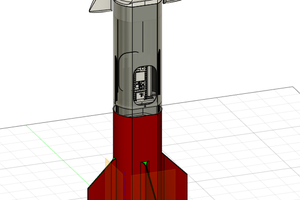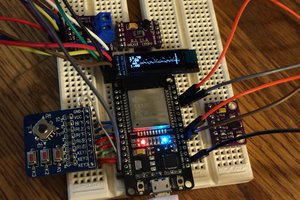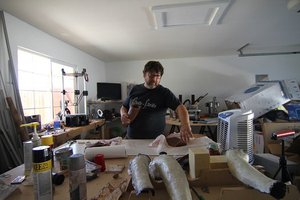After 7 years of hard work and many questions, we built a satellite! We, however, did not get here on our own. We are standing on the shoulders of the hundreds, thousands of makers, engineers, enthusiasts and amateurs that make up this beautiful open-source community. And we want to thank you all, send you huge, resounding recognition, because in your goodwill we found comfort and so many ideas to move us forward.
Quetzal-1 was comprised of an On-Board Computer (OBC), Transceiver and Antenna, Electrical Power System (EPS), Attitude Determination and Control System (ADCS), Payload (PLD), Antenna Deployment Mechanism (ADM) and a Structure (STR). Out of those, we designed and assembled all but the OBC, Transceiver and Antenna. Today, after much hard-work organizing and sifting through the satellite's many design files and iterations, we want to release the electrical design for three subsystems: the ADCS, EPS and ADM. We're also releasing the software for the ADCS and EPS, as well as the software used in the satellite's Ground Control Station (GCS), still operating to this day at UVG!
Accompanying the design files and software, we’ve recently published two peer-reviewed articles on the Journal of Small Satellites (JoSS). In fact, JoSS published its first ever special issue dedicated to Quetzal-1, titled "Guatemala's Pioneering Quetzal-1 Project".
Furthermore, while Quetzal-1 orbited the Earth, it sent a downlink with telemetry every 10 seconds for over 6 months. Throughout its life, and with ground stations all over the world listening via the SatNOGS network, this amounted to almost 85,000 packets received! So, we're also releasing this: a complete database of all the information collected by the satellite, which includes invaluable data on the space environment and the conditions Quetzal-1 was subjected to. Want to know how internal temperatures look for a satellite in LEO? Check our data out! Want to know how fast your own satellite will rotate upon deployment from the ISS? Perhaps our data can help!
Finally, we have released all the pictures that Quetzal-1 captured throughout its lifetime. These amount to the first visible pictures received on Earth, captured and sent by a Central American satellite in Earth orbit. With a cloudy view of the Central American Isthmus as Hurricane Iota enveloped the region, it was a momentous achievement for our team. Here, relish on the photo yourselves, as we did as it revealed itself to us on a late afternoon on November 17th, 2020.
%20(Repaired).jpg)
For more information on what we released, the location of all our repositories, and a good insider's look into the electrical and software design, check out our Github profile! We also have information on the project, including news and scientific publications that have been released throughout the project's lifetime in UVG's official website for Quetzal-1.
For ease of use, here are the links to the separate repos we've released:
- Electrical design of the satellite: https://github.com/Quetzal-1-CubeSat-Team/quetzal1-hardware
- Satellite flight software: https://github.com/Quetzal-1-CubeSat-Team/quetzal1-flight-software
- Ground control station software: https://github.com/danalvarez/gr-quetzal1
- Telemetry and photos taken by the satellite: https://github.com/Quetzal-1-CubeSat-Team/quetzal1-telemetry
- JoSS article on the Electrical Power System (EPS): https://jossonline.com/storage/2023/05/Final-Aguilar-Nadalini-Design-and-On-Orbit-Performance-of-the-Electrical-Power-System-for-the-Quetzal-1-CubeSat.pdf
- JoSS article on the Attitude Control and Determination System (ADCS): https://jossonline.com/storage/2023/05/Final-Alvarez-Design-and-On-Orbit-Performance-of-the-Attitude-Determination-and-Passive-Control-System-for-the-Quetzal-1-CubeSat.pdf
 danalvarez
danalvarez
 Paul Bruno
Paul Bruno
 Hunter Santana
Hunter Santana

 spacefelix
spacefelix